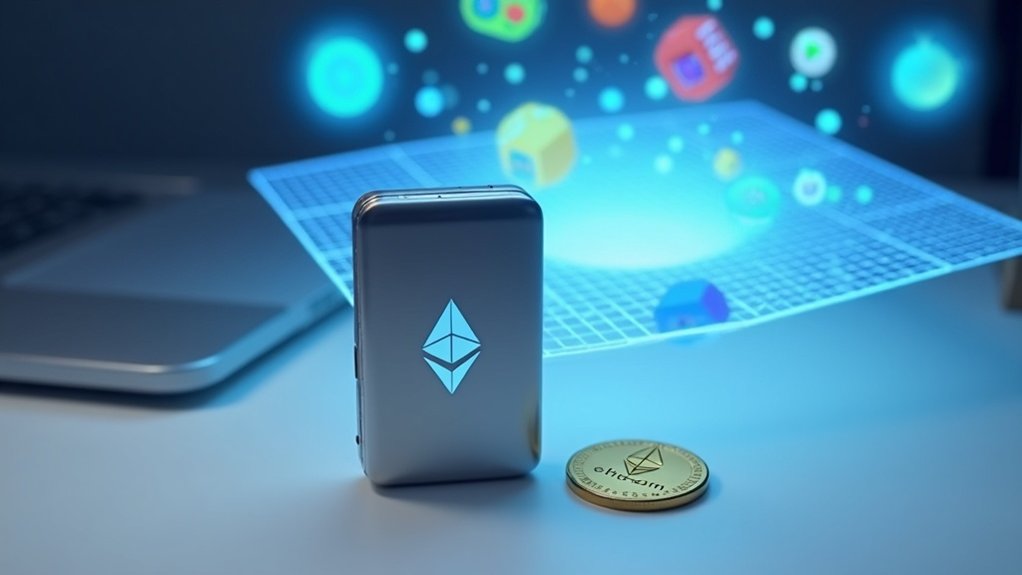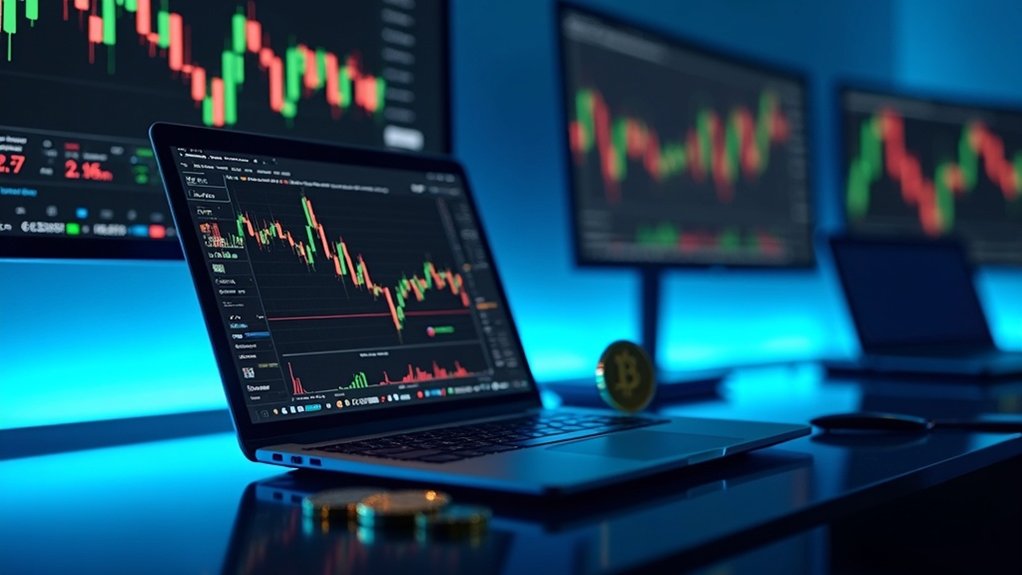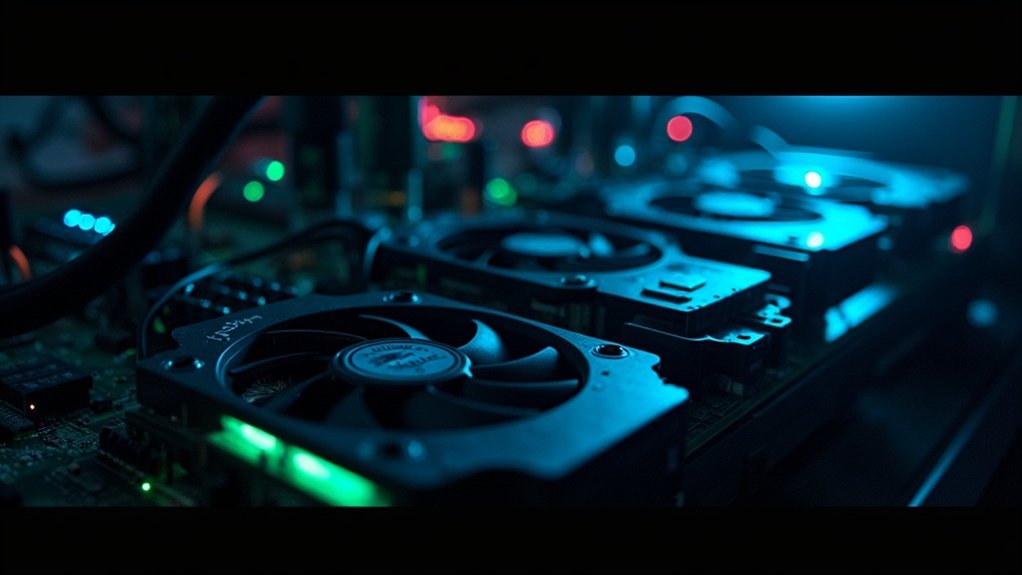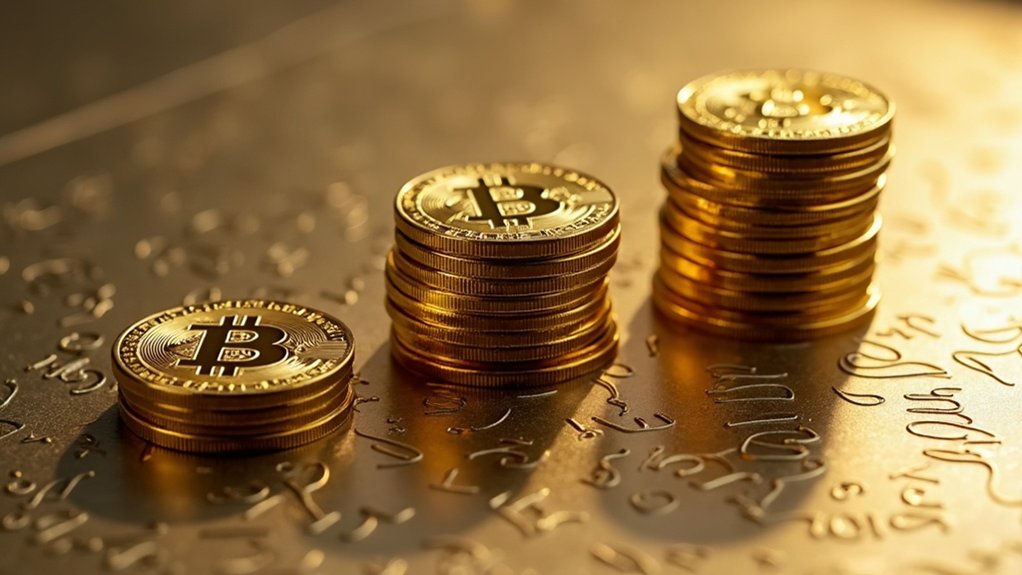Buying an NFT isn’t rocket science. First, set up a self-custody wallet like MetaMask or Coinbase Wallet and guard that seed phrase with your life—seriously, lose it and kiss your digital treasures goodbye. Purchase cryptocurrency (ETH or SOL) depending on the blockchain, then transfer funds to your wallet. Choose a marketplace—OpenSea for Ethereum, Magic Eden for Solana—and verify authenticity before purchasing. The blockchain confirmation might take a while, but patience pays off in this digital art frontier.
So you’ve decided to jump into the wild world of NFTs. Brave soul. The journey starts with choosing the right wallet—and no, not the leather kind.
Self-custody wallets store private keys locally and give you actual ownership of your digital collectibles.
Browser extensions like MetaMask or mobile options like Coinbase Wallet are popular choices.
Just don’t lose your seed phrase. Seriously. Write down those 12-24 words somewhere safe or kiss your digital treasures goodbye forever.
Your seed phrase is the only key to your digital kingdom. Lose it, and your NFTs vanish into the blockchain void forever.
Next up: funding. You’ll need cryptocurrency that matches the blockchain your desired NFT lives on.
Ethereum-based NFTs? You need ETH.
Solana? That’ll be SOL, please.
Buy crypto through exchanges like Coinbase or Binance, then transfer it to your wallet. You can also use platforms like Moonpay within wallet to purchase cryptocurrency using a bank card.
Remember to get extra for gas fees—those pesky transaction costs that sometimes cost more than the NFT itself.
Welcome to crypto.
Marketplace selection matters.
OpenSea dominates Ethereum.
Magic Eden rules Solana.
Each platform has different fees, supported blockchains, and sale formats. Many platforms use ERC-721 standard to ensure each token remains unique and traceable.
Some let you buy instantly.
Others make you bid in auctions like it’s a digital Sotheby’s.
Fees vary wildly between platforms.
The bigger marketplaces might offer more protection, but they’ll charge you for it.
Traditional auction houses like Christie’s and Sotheby’s have also entered the NFT space for high-value digital art sales.
Before clicking “buy,” verify you’re not purchasing digital snake oil.
Check collection verification badges.
Review the contract address on blockchain explorers.
Cross-reference with official creator channels.
Counterfeit NFTs are everywhere, waiting for the unwary.
Some collections have more fakes than a designer handbag street vendor.
The actual purchase process involves connecting your wallet to the marketplace, having sufficient funds (including gas), and confirming the transaction.
Then wait.
Blockchain confirmations take time. Minutes, sometimes hours.
That’s it. You’re now the proud owner of some digital tokens pointing to an image that may or may not be worth something tomorrow. Welcome to NFTs. Hope you enjoy the ride.
Frequently Asked Questions
What Happens if the NFT Creator Disappears?
If an NFT creator vanishes, buyers can face serious problems.
Off-chain artwork and metadata might disappear if hosting isn’t maintained.
Good luck getting royalties or legal recourse when the creator’s gone—especially if they were anonymous.
Smart contracts will keep running, but upgradable elements could be stuck forever.
The blockchain still proves ownership, sure, but of what? A dead link?
Projects using decentralized storage or on-chain assets fare better, obviously.
Can I Sell My NFT on a Different Marketplace?
Yes, NFTs can be sold on different marketplaces, but with a catch.
The marketplace must support the blockchain where the NFT was minted.
Ethereum NFTs can’t just hop over to Solana marketplaces. Period.
Sellers can list on multiple compatible platforms simultaneously—more eyeballs, more chances to sell.
Just connect your wallet to each marketplace and pay attention to their fees.
Some take a bigger bite than others.
No blockchain compatibility? No sale.
How Do I Know if an NFT Will Increase in Value?
Nobody knows for sure if an NFT will increase in value.
It’s gambling, not investing.
Market data shows 90% dropped after 2021’s peak.
Factors that might help: scarcity (limited editions perform better), creator reputation, utility beyond the artwork, and community engagement.
Celebrity endorsements can pump prices temporarily.
The cold truth? The top 1% of wallets control 70% of all NFTs.
The game is rigged, folks.
Past performance doesn’t guarantee future results.
Are There Recurring Fees for Owning an NFT?
Yes, NFT ownership often comes with recurring fees.
Most have royalty fees (averaging 6.1%) that creators collect on secondary sales.
Marketplace platforms take their cut too – listing fees, sales commissions (like OpenSea’s 2.5%), and gas fees for transactions.
Then there’s NFT-Fi costs if you’re into lending or staking.
Indirect costs add up over time.
The blockchain ain’t free, folks.
Those smart contracts keep the money flowing – mostly away from owners.
What Happens if the Hosting Platform Shuts Down?
When a hosting platform shuts down, your NFT remains on the blockchain, but accessing it gets trickier.
The friendly interface? Gone.
Your digital artwork? Possibly inaccessible if stored off-chain.
Sure, you technically still “own” it, but good luck enjoying those promised perks and utilities.
Platform death often tanks NFT values too.
Nobody wants digital art they can’t see.
You’ll need to use blockchain explorers or alternative marketplaces to manage your asset.
Welcome to decentralization, folks.









